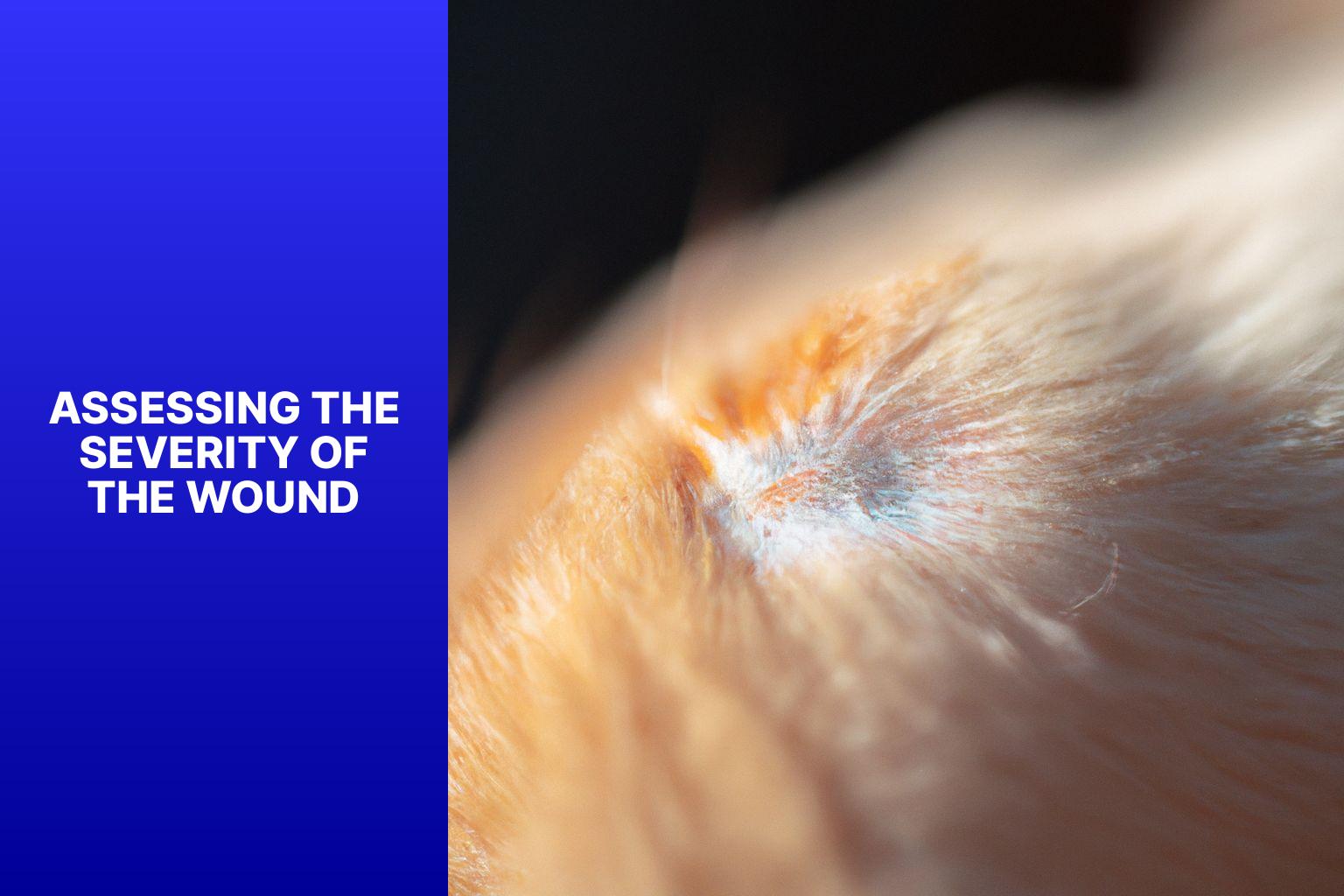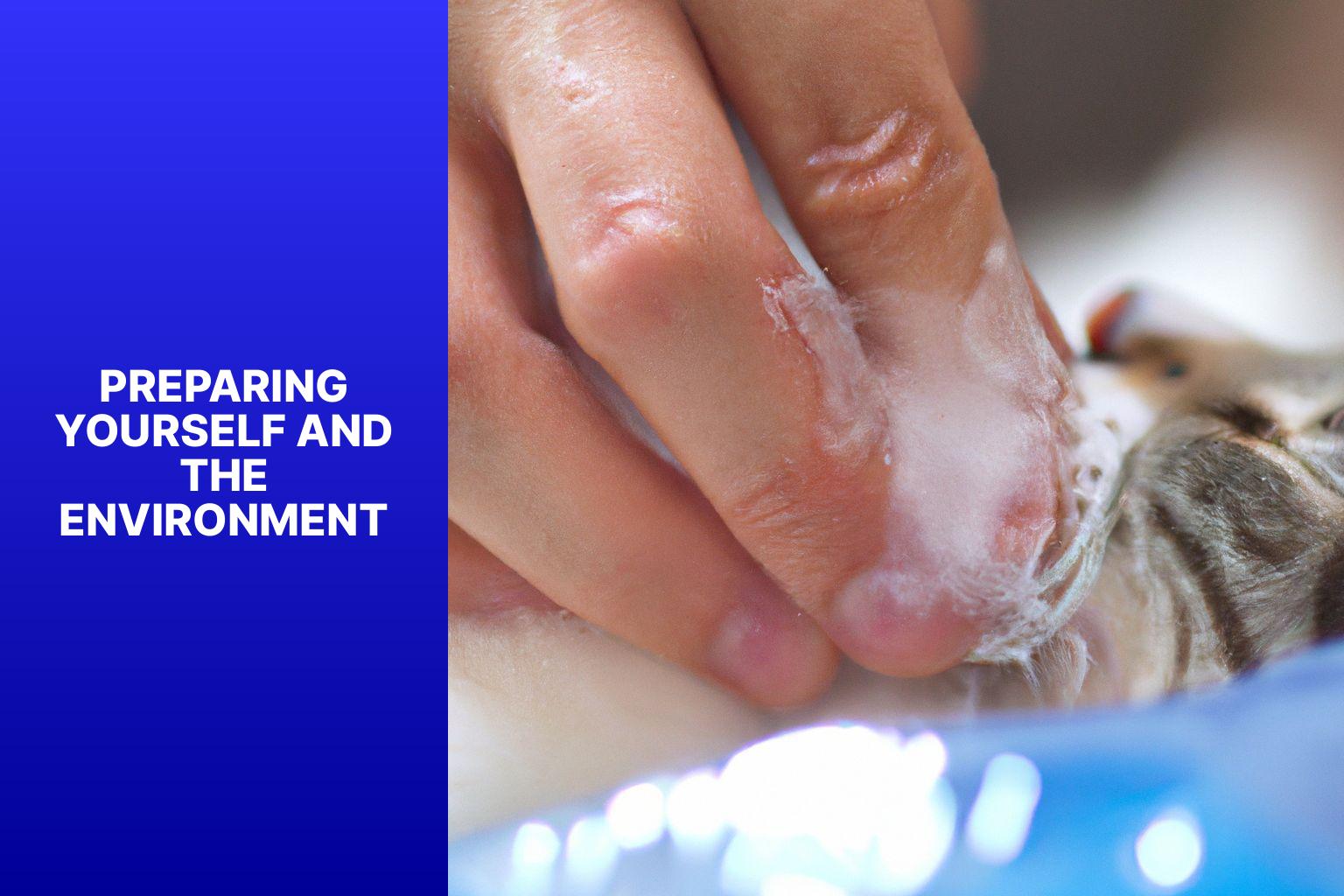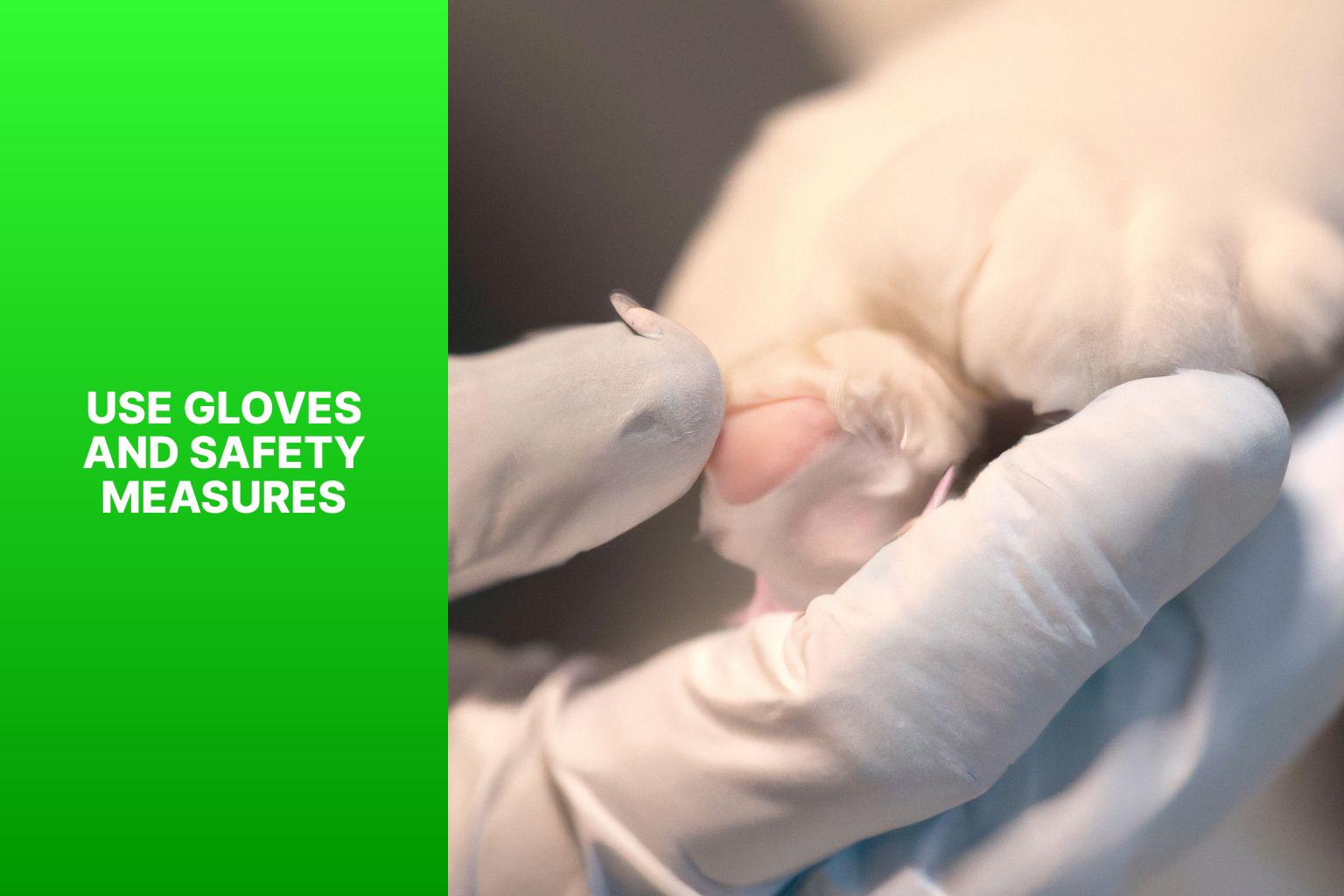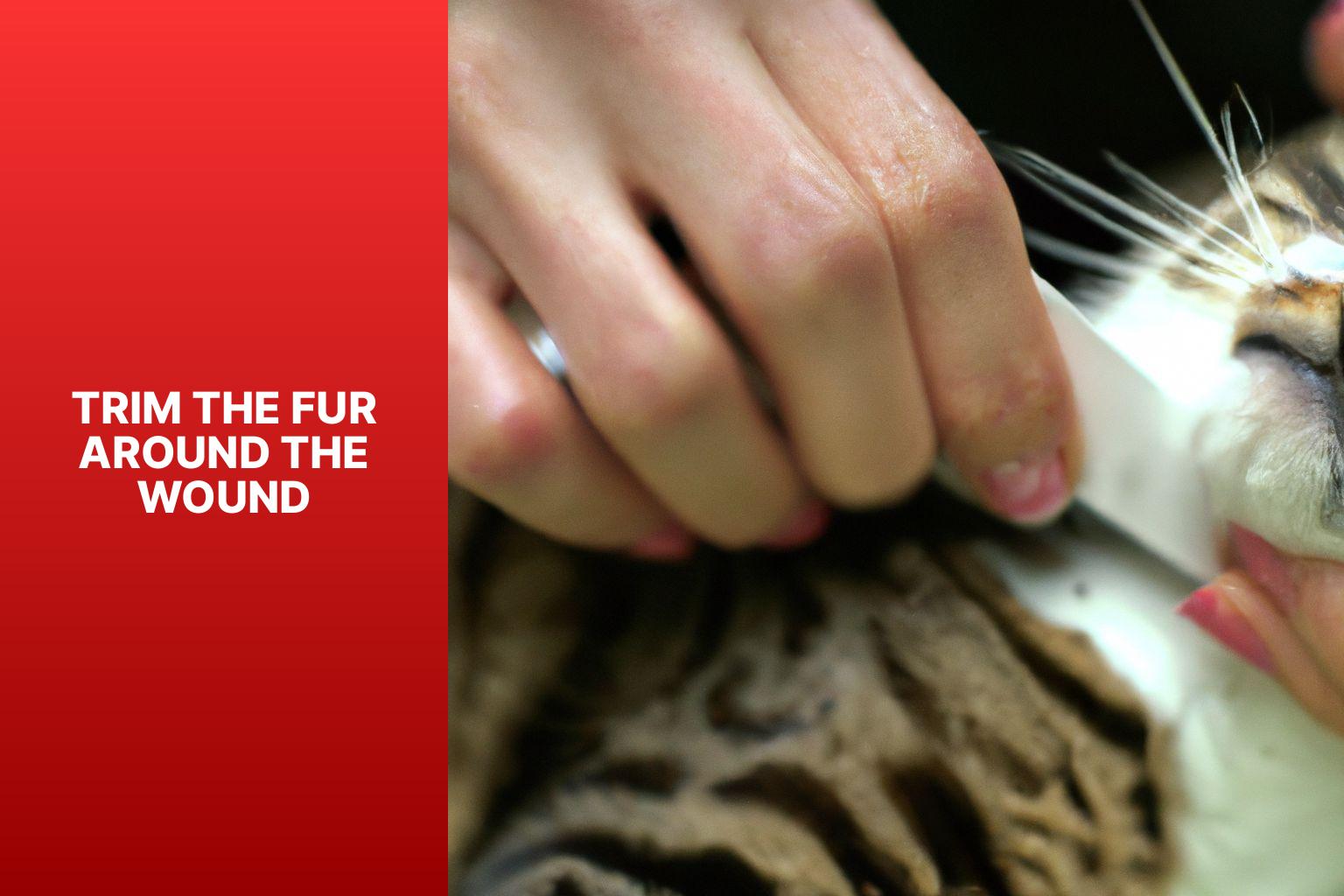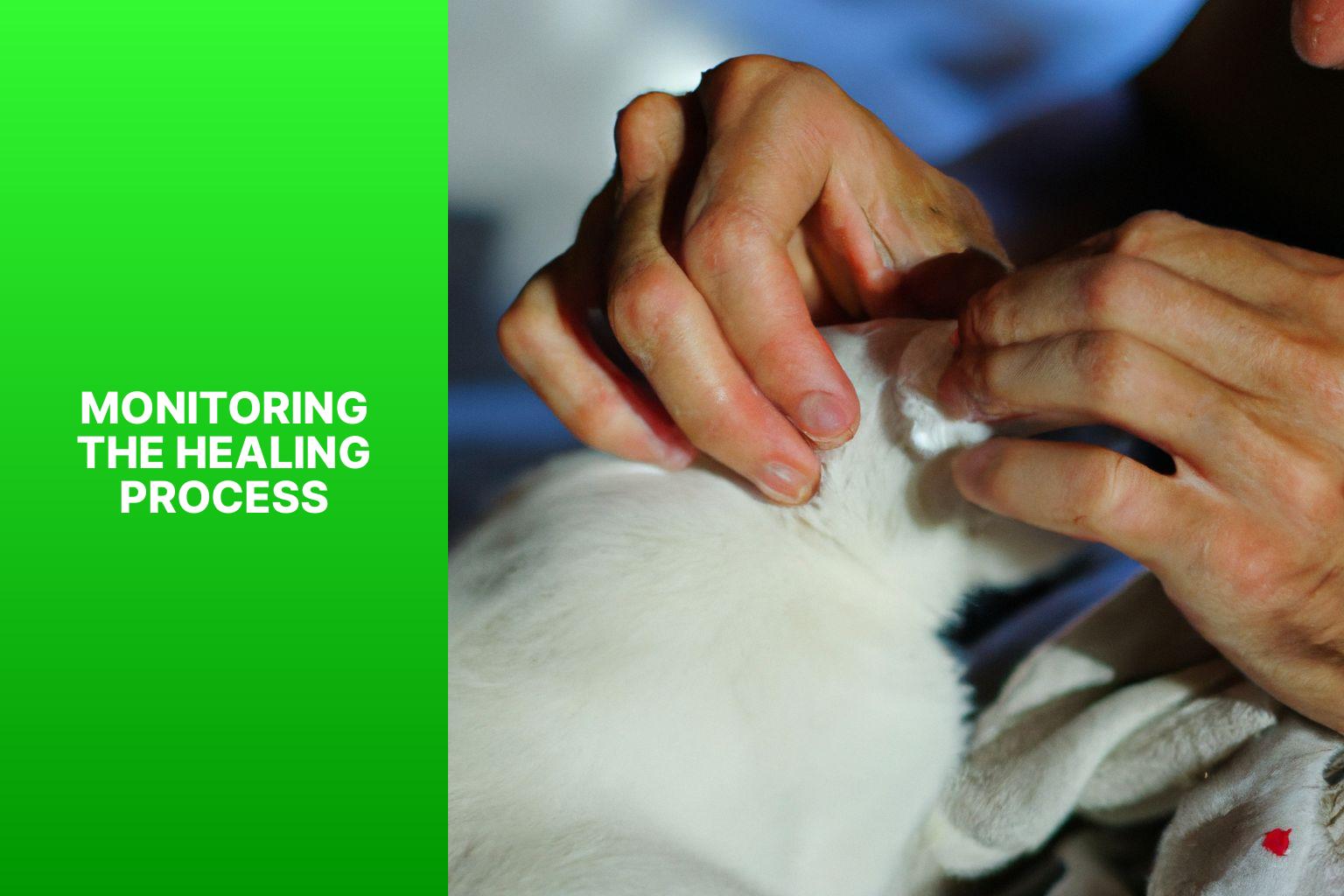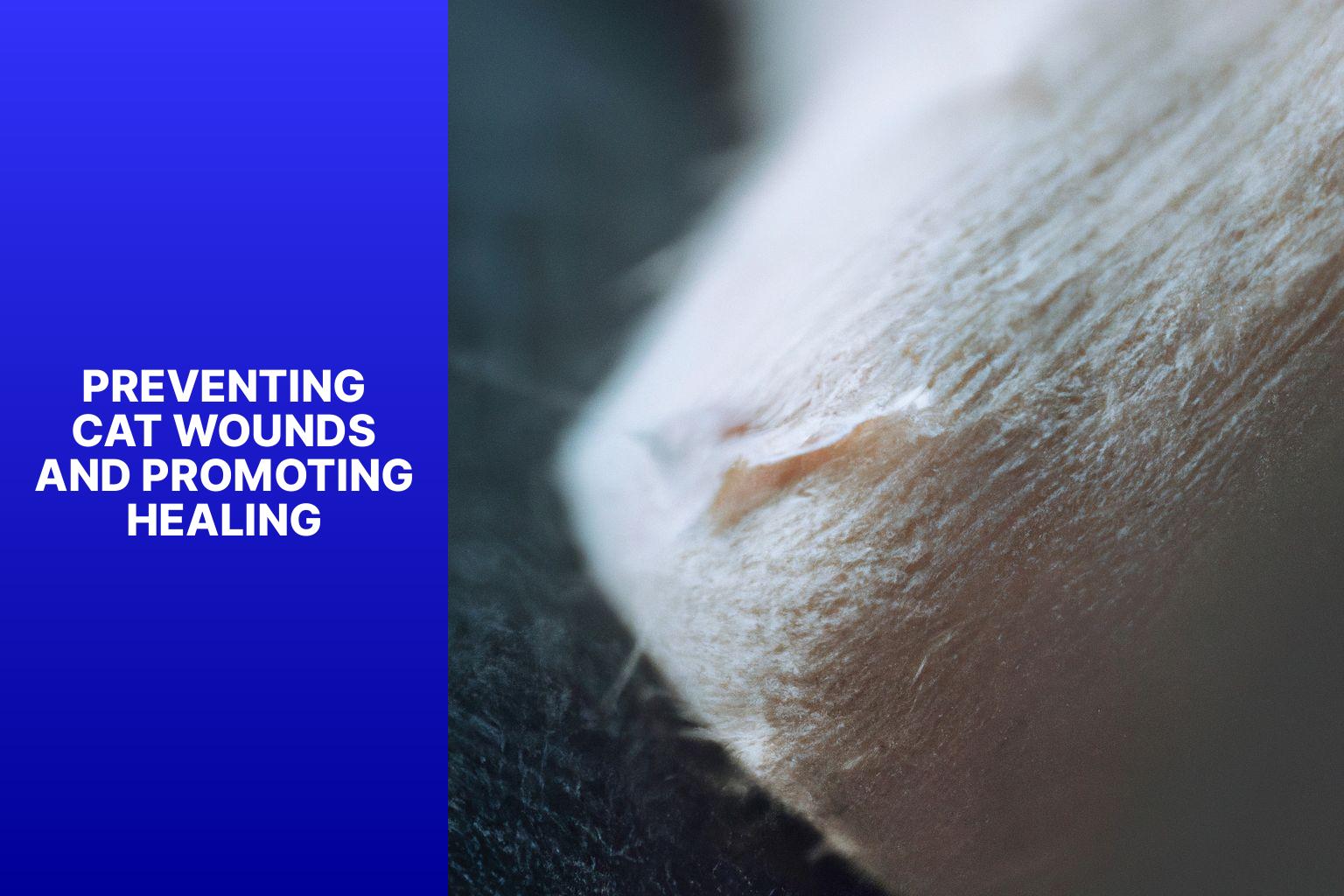Cats are curious creatures and can sometimes get themselves into situations where they end up with wounds. Knowing how to properly clean a cat wound is essential for their well-being and to prevent infections. Cleaning a cat wound requires caution, proper supplies, and a calm environment.
Understanding cat wounds is the first step in effective wound care. Whether it’s a minor scratch or a more severe laceration, it’s important to assess the severity of the wound to determine the necessary cleaning and treatment.
Gathering the necessary supplies for cleaning is crucial. Items like gloves, antiseptic solution, antibiotic ointment, and bandages are essential for carrying out the cleaning process effectively.
Preparing the environment and yourself for wound cleaning is equally important. Handling a wounded cat safely is essential to prevent further injuries to both yourself and the cat. Creating a calm and controlled environment will help keep the cat relaxed during the cleaning process.
In the step-by-step guide to clean a cat wound, several important procedures need to be followed carefully. These include restraining the cat, using gloves and safety measures, trimming the fur around the wound, gently cleaning the wound with an antiseptic solution, applying antibiotic ointment, and securing the wound with a bandage or dressing.
Monitoring the healing process is necessary to ensure proper recovery. Being aware of signs of infection or complications is crucial in identifying any potential issues that may require veterinary attention.
While minor wounds can often be treated at home, it’s important to know when to seek veterinary care. Some wounds may require professional assessment and treatment to prevent further complications.
Preventing cat wounds and promoting healing can be achieved through various measures such as keeping your cat’s living environment safe, regularly checking for any potential hazards, and maintaining good hygiene practices.
By following these guidelines, you can effectively clean and care for a cat wound, promoting healing and ensuring the well-being of your feline companion.
1. Understanding Cat Wounds: It is important to have knowledge about different types of cat wounds and their causes to effectively clean and treat them.
2. Assessing the Severity of the Wound: Before cleaning a cat wound, it is crucial to evaluate the severity of the injury to determine the appropriate cleaning and treatment methods.
3. Gathering Necessary Supplies for Cleaning: Having the right items such as gloves, antiseptic solutions, and antibiotic ointments is essential for properly cleaning a cat wound and preventing infection.
Understanding Cat Wounds
Understanding Cat Wounds is crucial for cat owners to ensure proper care and treatment. Cat wounds can happen due to fights with other animals or accidents.
1. Common types: Cat wounds can range from shallow scratches to deep puncture wounds. Identify the severity of the wound to determine the right treatment.
2. Signs of infection: Cat wounds can easily get infected. Look for redness, swelling, discharge, or an unpleasant odor. If these signs are present, immediate veterinary attention is necessary.
3. Immediate first aid: Gently clean the cat’s wound with mild antiseptic or saline solution to remove dirt and debris. Apply a clean bandage to protect the wound and prevent further contamination.
4. Professional examination: Even minor wounds should be examined by a veterinarian. They can assess the injury’s extent, check for internal damage, and provide appropriate treatment options.
5. Antibiotics: In some cases, cat wounds may need antibiotic treatment to prevent or treat infection. The veterinarian will determine if antibiotics are necessary based on the wound’s severity and condition.
6. Wound care at home: Follow the veterinarian’s instructions for wound care at home. This may involve regular cleaning of the wound, applying prescribed ointments, and ensuring your cat does not irritate or worsen the wound.
By understanding cat wounds and promptly seeking appropriate veterinary care, you can ensure the well-being and speedy recovery of your feline companion.
Assessing the Severity of the Wound
Photo Credits: Www.Catcornerblog.Com by Walter Mitchell
Assessing the Severity of the Wound
When assessing a cat’s wound, consider the following factors:
– Location: Wounds on sensitive or vital areas like the abdomen or face are generally more severe.
– Size: A larger wound indicates more tissue damage and a higher risk of infection.
– Depth: A deeper wound may involve damage to underlying structures and require extensive treatment.
– Bleeding: Profuse bleeding may indicate damage to a large blood vessel.
– Inflammation/Redness: Inflammation or redness around the wound may indicate infection or a more severe injury.
– Pain: Excessive pain may indicate a deeper or significant injury.
Remember to consult a veterinarian for an accurate assessment and proper treatment recommendations.
Gathering Necessary Supplies for Cleaning
When it comes to cleaning a cat wound, it is important to gather all the necessary supplies beforehand. This includes gathering essential items such as disposable gloves to protect from infections, an antiseptic solution that is safe for cats, sterile gauze pads for cleaning and medication, clean towels or washcloths for drying, saline solution for flushing out debris, clean and sharp scissors for trimming excess fur, first aid tape to secure gauze pads, and treats for rewarding cooperation.
Let me share a true story about the importance of gathering necessary supplies for cleaning a cat wound. A few months ago, my cat Lucy got into a fight with a neighbor’s cat and ended up with a deep scratch on her paw. Fortunately, I had gathered all the necessary supplies ahead of time, including gloves, antiseptic solution, gauze pads, and treats. Despite being in pain, Lucy remained calm during the cleaning process. With the supplies at hand, I was able to effectively clean her wound and prevent any potential infections. It was such a relief knowing that I had gathered everything in advance, ensuring a smooth and efficient cleaning experience for both Lucy and myself.
What items do you need for cleaning a cat wound?
When cleaning a cat wound, it is important to have all the necessary supplies on hand to ensure proper and safe cleaning. Here is a list of items you will need in order to clean a cat wound:
- Gloves: It is essential to wear disposable gloves while cleaning a cat wound to protect yourself from infections or contaminants.
- Clean towels or gauze pads: These are needed to gently clean the wound and apply any necessary solutions.
- Antiseptic solution: It is important to use a cat-safe antiseptic solution to clean the wound and prevent any potential infections.
- Warm water: Dilute the antiseptic solution with warm water in order to effectively clean the wound.
- Saline solution: Use a saline solution to flush out the wound and remove any debris that may be present.
- Disinfectant spray or wipes: These are necessary to clean the surrounding area and prevent the spread of bacteria.
- Antibiotic ointment: Apply a cat-safe antibiotic ointment to help promote healing of the wound.
- Bandage or dressing: Depending on the size and location of the wound, you may need to use a bandage or dressing to secure and protect it.
- Treats or rewards: It is helpful to keep treats or rewards handy in order to keep your cat calm and reward them for cooperating during the cleaning process.
By having all these essential items ready, you can ensure a thorough and safe cleaning of your cat’s wound.
Preparing Yourself and the Environment
Photo Credits: Www.Catcornerblog.Com by Albert Clark
To prepare yourself and the environment for wound cleaning, start by washing your hands with soap and warm water to prevent bacteria spread.
Gather all the necessary supplies including gloves, clean towels, antiseptic solution, and recommended products from your veterinarian.
Select a quiet and well-lit area for distraction-free wound cleaning.
Prior to cleaning, make sure to remove any potential hazards from the environment.
If your cat becomes anxious or aggressive during the process, gently restrain them with a towel or blanket for safety.
To ensure good ventilation and prevent unpleasant smells, make sure there is proper air circulation.
For added safety, secure all doors and windows to prevent your cat from escaping.
It is important to have access to clean water and a sink for rinsing equipment and hands.
Mentally prepare yourself to stay calm and focused while cleaning the wound.
Keep a first aid kit nearby in case of any accidents or injuries that may occur during the cleaning process.
How to handle a wounded cat safely?
When it comes to handling a wounded cat, safety for both yourself and the cat should be your top priority. To handle a wounded cat safely, follow these steps:
1. Calmly approach the cat and gently restrain it to prevent further injury. Use a towel or blanket to wrap the cat, making sure to secure its limbs to avoid any biting or scratching.
2. Ensure your own safety by wearing gloves to protect yourself from scratches or bites. This will also help prevent any possible infections.
3. Improve visibility and access to the wound by trimming the fur around it. Be cautious not to cause any additional harm or discomfort to the cat.
4. Clean the wound using an antiseptic solution that is recommended by a veterinarian. Use a clean cloth or gauze to carefully remove any dirt or debris.
5. Apply antibiotic ointment to the wound to prevent any infections. Make sure to follow the veterinarian’s instructions for the proper application.
6. If necessary, secure the wound with a bandage or dressing. Ensure that it is not too tight, as this could restrict circulation, but snug enough to protect the wound.
Remember, handling a wounded cat can be a stressful experience for both you and the cat. Stay calm, be patient, and handle the cat gently throughout the entire process. If you are unsure or the wound appears to be severe, it is crucial to seek veterinary care immediately for proper treatment and recovery.
Creating a calm and controlled environment
Creating a calm and controlled environment is crucial when cleaning a cat wound. It minimizes stress and ensures the safety of both the cat and the person administering the treatment.
– Choose a quiet, comfortable space where the cat feels secure and relaxed.
– Remove distractions or sources of noise that could agitate the cat, such as other pets, loud music, or excessive movement.
– Dim the lights or use soft lighting to create a soothing atmosphere.
– Use gentle and calm movements when handling the cat, speaking softly and reassuringly.
– Consider wrapping the cat gently with a towel or blanket to provide security and prevent excessive movement.
– Keep all necessary supplies and equipment within easy reach to avoid sudden movements or delays during the cleaning process.
Creating a calm and controlled environment is essential for the cat’s well-being and the effectiveness of the wound cleaning process. It fosters trust between the cat and the caregiver, making the experience less stressful for everyone involved. By following these steps and ensuring a calm environment, you can ensure a successful and positive wound cleaning experience for both you and your cat.
Step-by-Step Guide to Clean a Cat Wound
1. To begin, prepare a clean and well-lit area for the task at hand.
2. Next, gently restrain your cat to ensure their safety and your own.
3. Before proceeding, put on disposable gloves to maintain hygiene.
4. Take a close look at the wound to assess its severity and determine if immediate veterinary attention is needed.
5. If the wound is minor, delicately rinse it with lukewarm water to remove any debris present.
6. Then, make use of a recommended mild antiseptic solution to thoroughly disinfect the wound, ensuring complete coverage.
7. Carefully pat the wound dry using clean gauze or a soft towel.
8. To aid in preventing infection and promoting healing, apply an antibiotic ointment or cream.
9. Once the ointment is applied, cover the wound with a sterile non-stick bandage or dressing.
10. It is important to regularly check for any signs of infection, such as redness, swelling, or discharge.
11. Keep a close eye on your cat’s behavior and appetite to monitor for signs of recovery.
Remember, following these steps will help ensure proper care and cleanliness for your cat’s wound.
Restrain the cat and gain its trust
Restrain the cat and gain its trust by following these steps for your safety and the cat’s well-being:
1. Approach the cat calmly and slowly, avoiding sudden movements.
2. Speak to the cat in a soft, gentle voice to offer reassurance and build trust.
3. Use treats or a favorite toy to create positive associations with your presence.
4. Allow the cat to approach you on its own terms and choose to interact.
5. Physically restrain the cat gently and securely without being forceful or aggressive.
6. Protect yourself and the cat from scratches or bites by using a towel or blanket.
7. Maintain a calm demeanor to avoid escalating the cat’s anxiety.
8. Gradually release the cat and give it space and time to calm down after the interaction.
Remember, building trust with a cat takes time and patience. Always respect the cat’s boundaries and never force it into an uncomfortable situation. By following these steps, you can gain the cat’s trust and ensure a safe and peaceful interaction.
Use gloves and safety measures
Photo Credits: Www.Catcornerblog.Com by Russell Ramirez
When cleaning a cat wound, it is essential to use gloves and safety measures to protect yourself and prevent infection. Follow these steps to ensure proper wound care:
- Prior to touching the wound, put on disposable gloves. This will prevent contamination and safeguard your hands.
- It’s crucial to work in a well-lit and clean area. This will enable you to see the wound clearly and minimize the introduction of bacteria.
- Clean the wound gently, using a mild antiseptic solution and sterilized gauze or cotton pads. This will help eliminate debris and prevent infection.
- If necessary, apply an antibiotic ointment as instructed by your veterinarian. This will aid in healing and prevent bacterial growth.
- After cleaning the wound, dispose of the gloves properly. Make sure to thoroughly wash your hands with soap and water to prevent cross-contamination.
Pro-tip: Remember to always consult your veterinarian for guidance on wound care. They will provide specific instructions based on the severity and location of the wound.
Trim the fur around the wound
Photo Credits: Www.Catcornerblog.Com by Jeremy Clark
1. To ensure safety and minimal stress, gently restrain the cat while trimming the fur around the wound.
2. Use clean, sharp scissors or pet grooming clippers to carefully trim the fur.
3. Take a close look at the wound and the area surrounding it to check for any matted or tangled fur.
4. Start trimming at a safe distance from the wound and gradually move closer to avoid any accidental injury.
5. Hold the fur between your fingers and make short, precise cuts to trim it.
6. Only remove the necessary amount of fur to expose the wound for cleaning and prevent further contamination.
7. Be gentle and avoid pulling or tugging on the fur to ensure the comfort of the cat.
8. If the wound is located near the face or in sensitive areas, it might be advisable to consult a veterinary professional for precise trimming.
9. Dispose of the trimmed fur properly to prevent any risks of ingestion or entanglement.
10. Once you have finished trimming the fur around the wound, proceed with appropriate wound cleaning and dressing methods.
Always handle this process with caution and seek veterinary advice if you have any concerns or if the wound is severe.
Gently clean the wound with antiseptic solution
To gently clean the wound with an antiseptic solution, follow these steps carefully to prevent infection or complications.
- Prepare the antiseptic solution according to the packaging instructions.
- Wear gloves to protect yourself from pathogens.
- Using clean tweezers, remove debris or foreign objects around the wound.
- Take a sterile gauze pad or cotton ball and soak it in the antiseptic solution.
- Gently dab the wound with the soaked gauze pad or cotton ball, making sure to cover the entire wound.
- Avoid vigorously scrubbing the wound to prevent tissue damage.
- Allow the antiseptic solution to sit on the wound for a few minutes to kill bacteria.
- Pat the wound dry with a clean, dry gauze pad. Avoid rubbing to prevent irritation.
- As directed by your veterinarian, apply prescribed topical medication or ointment.
- Dispose of used gloves, gauze, and cotton balls in a sealed bag to prevent contamination.
Remember, consult your veterinarian for specific wound care instructions for your cat’s condition. Watch for signs of infection, such as increased redness, swelling, discharge, or lethargy in your cat. By following these steps and gently cleaning the wound with an antiseptic solution, you can promote healing and prevent complications.
Apply antibiotic ointment to the wound
To properly care for a cat wound, it is important to follow these steps and apply antibiotic ointment to the affected area.
Prepare the wound by cleaning it with mild soap and water, making sure to remove any debris or dirt. Gently pat dry the wound using a clean towel.
Next, assess the wound for any signs of infection such as redness, swelling, or discharge. If you notice any of these symptoms, or if the wound is deep or puncture-like, it is recommended to consult a veterinarian for further assistance.
Before applying the antibiotic ointment, be sure to wear disposable gloves to prevent the spread of bacteria. This will help maintain a clean and sterile environment.
When applying the ointment, use a clean cotton swab or a gloved finger to apply a thin layer directly to the wound. It is important to avoid touching the wound with bare hands or any contaminated surfaces to prevent the risk of contamination.
If necessary, cover the wound with a sterile gauze pad or a bandage to provide additional protection. Ensure that the covering is not too tight, as it may impede blood circulation.
Keep a close eye on the wound and regularly check for any improvements or worsening. If there is no improvement or if the wound starts to worsen, it is crucial to seek veterinary care as soon as possible.
Always follow the instructions provided by the veterinarian. If they have recommended a specific antibiotic ointment or additional instructions, it is important to adhere to them accordingly.
After applying the ointment, dispose of the gloves properly and clean any surfaces that have come into contact with the wound or the ointment. This will help maintain cleanliness and prevent the spread of bacteria.
By following these steps and properly applying the antibiotic ointment, you can effectively promote healing and prevent infection in your cat’s wound.
Secure the wound with a bandage or dressing
Secure the wound with a bandage or dressing to protect your cat’s health. Watch out for signs of infection or complications along the way. Taking these precautions ensures proper healing and minimizes risks. Remember, a well-secured wound promotes a speedy recovery and keeps your furry friend safe and comfortable. Stay vigilant and provide the care your cat needs during this crucial time.
Monitoring the Healing Process
Photo Credits: Www.Catcornerblog.Com by Christian Hall
As we dive into monitoring the healing process of a cat wound, we’ll uncover the crucial signs to watch out for regarding possible infection or complications. Stay attuned to your furry friend’s wellbeing by understanding the indicators and ensuring a smooth recovery journey. Let’s explore the various aspects of the healing process to ensure optimal care for your beloved feline companion.
Signs of infection or complications
- Signs of infection or complications can include swelling around the cat’s wound.
- An infected wound may exhibit redness and warmth, indicating inflammation.
- If the cat experiences increased pain or discomfort, it could suggest a poorly healing or infected wound.
- Pus or fluid presence in the wound may indicate an infection that requires veterinary attention.
- A foul odor emitted from the wound can be a sign of bacterial or fungal infection.
- If the wound is not healing or is taking longer than expected, complications may be present.
- Keep an eye out for behavioral changes in the cat, such as decreased appetite, lethargy, or irritability, as they may indicate an infection affecting overall well-being.
- In severe cases, systemic symptoms like fever, coordination loss, or other systemic symptoms may necessitate immediate veterinary attention.
When to Seek Veterinary Care
Knowing when to seek veterinary care for your cat’s wound is crucial. Here are some key factors to consider:
– Bleeding: When to seek veterinary care is important if the wound is bleeding profusely or doesn’t stop after applying pressure. Excessive blood loss can be life-threatening.
– Deep wounds: When to seek veterinary care is necessary if the wound is deep and may affect underlying tissues or organs. A veterinarian should evaluate it to determine if stitches or surgical intervention is required for proper healing.
– Signs of infection: When to seek veterinary care is essential if you notice signs of infection, such as increased pain, redness, swelling, discharge, or a foul odor from the wound. Infections can worsen if left untreated and may require antibiotics.
– Difficulty in eating, drinking, or breathing: When to seek veterinary care becomes necessary if the wound is near the mouth, throat, or nose and your cat struggles with eating, drinking, or breathing. Immediate veterinary attention is necessary to prevent complications.
– Behavioral changes: When to seek veterinary care is important if your cat becomes lethargic, distressed, constantly licks or scratches the wound, or displays abnormal behavior. Seeking veterinary care will help address any underlying issues.
Remember, when in doubt, it is better to seek professional veterinary care. Your veterinarian can accurately assess the wound and provide appropriate treatment for your cat’s well-being.
Preventing Cat Wounds and Promoting Healing
Photo Credits: Www.Catcornerblog.Com by Randy Lee
Preventing Cat Wounds and Promoting Healing
To effectively prevent cat wounds and promote healing, it is important to follow these steps:
- Keep your cat indoors or in a secure, enclosed outdoor area to minimize the likelihood of fights with other animals.
- Regularly trim your cat’s nails to prevent injuries caused by scratching.
- Provide a well-balanced diet to strengthen your cat’s immune system and overall health.
- Ensure that your cat receives regular veterinary care, including vaccinations and measures to prevent parasites.
- Create a safe and stress-free environment for your cat to reduce the risk of accidents or self-inflicted injuries.
- Keep dangerous household hazards, such as sharp objects and toxic substances, out of your cat’s reach.
- Offer your cat plenty of mental and physical stimulation to prevent boredom, as this can lead to destructive behavior and injuries.
- Monitor your cat’s behavior closely and address any signs of aggression or territorial disputes with other pets.
- Schedule regular grooming sessions to check for wounds or skin issues and to promote a clean and healthy coat.
- In the unfortunate event that your cat sustains a wound, seek prompt veterinary advice to ensure proper treatment and prevent any potential complications.
In a heartwarming true story, a devoted cat owner diligently followed these preventative measures and diligently created a safe and enriching environment for her beloved feline. Thanks to her unwavering efforts, her cat remained free from injuries and enjoyed optimal health and happiness.
Some Facts About How To Clean a Cat Wound:
- ✅ A cat wound can be open or closed.
- ✅ It is important to stop the bleeding by applying direct pressure with a dressing.
- ✅ Avoid applying ointments or chemicals to the wound.
- ✅ Clean the wound with a mild antiseptic and warm water two to three times a day.
- ✅ Keep the wound bandaged to prevent infection and licking.
